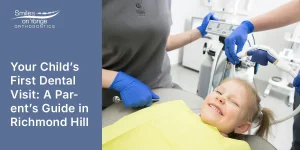
PEDIATRIC DENTISTTRY
Nitrous Oxide

Nitrous Oxide in Dentistry | Comfortable Dental Experiences for Your Kids
Nitrous oxide for kids
Nitrous oxide in dentistry, or laughing gas, is the most frequently used method for easing mild to moderate anxiety in children. Administered through a small mask that fits over your child’s nose, it is an effective way to calm anxiety.
Your little one will be asked to breathe through his or her nose and not through the mouth. As the gas begins to work, the patient will become calm, but still be awake and able to talk with the dentist.
At the end of your child’s appointment, he or she will resume breathing regular oxygen, and all the effects of dental nitrous oxide will disappear. As your youngster gets older and becomes more comfortable during dental visits, nitrous oxide may become unnecessary.
Dental nitrous oxide FAQs
Nitrous oxide, commonly referred to as laughing gas, is a mild sedative used in dentistry to ease anxiety, especially in children. Administered through a small mask placed over the nose, it induces a calming effect while allowing the patient to remain awake and communicative during the dental procedure.
Yes, dental nitrous oxide is considered safe for children when administered by trained dental professionals. Its effects are mild, and the gas is carefully monitored throughout the dental procedure. The dosage is adjusted to ensure the child remains comfortable and anxiety-free.
Nitrous oxide is administered through a small mask that fits over the child’s nose. The child is instructed to breathe through the nose, allowing the gas to take effect. The experience is characterized by a calming sensation, with the child remaining awake and able to communicate with the dentist throughout the procedure.
Nitrous oxide is generally well-tolerated, and side effects are minimal. Some children may experience mild nausea or dizziness, but these effects quickly dissipate once the gas is discontinued. The gas is carefully administered to ensure a comfortable and safe experience.
While nitrous oxide is generally safe, its use may not be recommended for children with certain respiratory conditions or specific medical concerns. It is crucial to communicate openly with the dentist, providing a comprehensive medical history to ensure the safety and suitability of nitrous oxide for your child.
At the end of the dental appointment, the child resumes regular breathing of oxygen, and the effects of nitrous oxide dissipate swiftly. There is no lingering impact, allowing the child to resume normal activities without any hindrance.
As a reliable ally in pediatric dentistry, nitrous oxide plays a pivotal role in fostering positive dental experiences for children. Under the guidance of skilled dental professionals, this gentle sedative ensures that anxiety takes a backseat, paving the way for brighter, stress-free smiles. Embrace the power of dental nitrous oxide and transform your child’s dental journey into a realm of comfort and ease.
Clinic Hours
Monday
Tuesday
Wednesday
Thursday
Friday
Saturday
8:00am – 4:00pm
9:30am – 6:30pm
8:00am – 4:00pm
9:30am – 6:30pm
10:00am – 4:00pm
by appointment only
Other Pediatric Services
SEE INSIDE OUR OFFICE
Where Pediatric Comfort Meets Orthodontic Precision
Take a peek inside our warm, modern Richmond Hill clinic, thoughtfully designed for kids, teens, and families.
From playful touches to high-tech care, every detail supports growing smiles.
Smiles on Yonge
Monday: 8:00am - 4:00pm
Tuesday: 9:30am - 6:30pm
Wednesday: 8:00am - 4:00pm
Thursday: 9:30am - 6:30pm
Friday: 10:00am - 4:00pm
Saturday: call for availability
Keep in Touch!
Contact Us
© All Rights Reserved smilesonyonge.ca
Privacy Policy | Terms of Use | Sitemap




